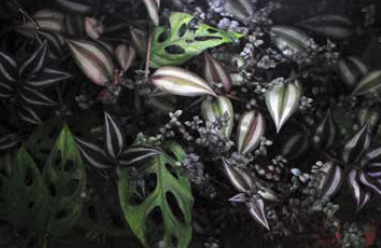Plants for Green Roofs
Plant selection for green roofs is both an art and a science.
 Designers often have to divide their attention between functional and aesthetic requirements. While there are literally hundreds of plants to choose from, the average landscape design palette probably only consists of up to 20 plants that are commonly found in our urban landscape. These plants are there for a reason; they are cost-effective, can be procured with ease, not too difficult to maintain and possess certain rudimentary aesthetic attributes. Think Yellow Creeping Daisy (Sphagneticola trilobata) for ground coverage with the occasional yellow flowers and Heliconia ‘American Dwarf’ for its fuller volume and ornamental potential.
Designers often have to divide their attention between functional and aesthetic requirements. While there are literally hundreds of plants to choose from, the average landscape design palette probably only consists of up to 20 plants that are commonly found in our urban landscape. These plants are there for a reason; they are cost-effective, can be procured with ease, not too difficult to maintain and possess certain rudimentary aesthetic attributes. Think Yellow Creeping Daisy (Sphagneticola trilobata) for ground coverage with the occasional yellow flowers and Heliconia ‘American Dwarf’ for its fuller volume and ornamental potential.
Choosing the right plant comes with experience. Practitioners learn to pick them through a tried-andtested combination of apprenticeship and experiment. Those in the know might recall a certain Zephyranthes rosea, the Rain Lily with its pink flowers blooming after a heavy rain. Introduced as a green roof plant with much enthusiasm, interest in this plant faded quickly after it was found to be exceptionally susceptible to weeds. Plants such as Cyanotiscristata are also particularly vulnerable before they become well-established.
Special attention has to be paid to plants used for rooftop greenery, as the green roof system directly influences plant choice. While most extensive green roof systems are able to accommodate a large variety of plant types, novel systems such as roll-on mat green roofs are designed specifically for succulents. Such systems provide ease of maintenance through low irrigation requirements and are light enough to be installed onto metal roof deckings, but are handicapped by their limited plant palette.
 Recent studies in Urban Heat Island (UHI) mitigation techniques have shown that greenery can improve both the indoor and outdoor environment. Green roofs can drastically lower direct exposure to solar radiation andreduce surface temperature by close to 50%. However, not all plants carry the same temperature reduction potential. In this light, it is important that the plant selection process includes consideration of temperature reduction potential for improved thermal comfort. Specific functional attributes such as evapotranspiration rate and albedo provide valuable insight into the thermal performance of plants. In addition to beautifying the urban landscape, plants serve as delivery agents of water, moving it from the soil to the atmosphere through its leaves and in the process improving the thermal environment.
Recent studies in Urban Heat Island (UHI) mitigation techniques have shown that greenery can improve both the indoor and outdoor environment. Green roofs can drastically lower direct exposure to solar radiation andreduce surface temperature by close to 50%. However, not all plants carry the same temperature reduction potential. In this light, it is important that the plant selection process includes consideration of temperature reduction potential for improved thermal comfort. Specific functional attributes such as evapotranspiration rate and albedo provide valuable insight into the thermal performance of plants. In addition to beautifying the urban landscape, plants serve as delivery agents of water, moving it from the soil to the atmosphere through its leaves and in the process improving the thermal environment.
Plants such as Phyllanthusmyrtifolius and Sphagneticola trilobata do so in a rather adequate manner. Picking plants for their temperature reduction potential can help improve the urban environment, but is seldom practiced in the industry. To do so would require a paradigm shift in the current landscape design ethos that goes beyond basic requirements of aesthetics and maintainability. This space remains largely untrodden but is an important step to improving the urban microclimate.
Author – Dr. Terrence Tan






